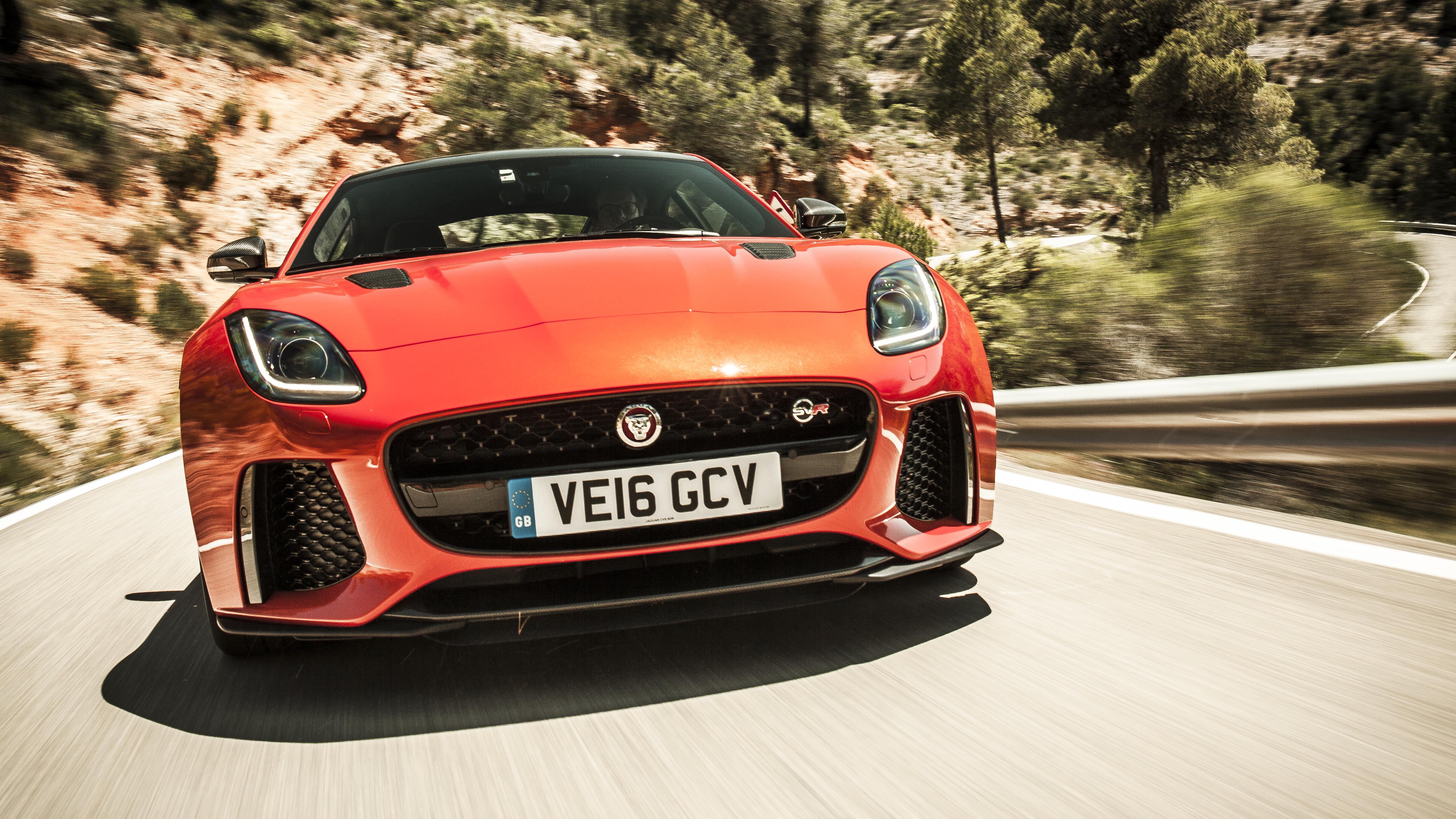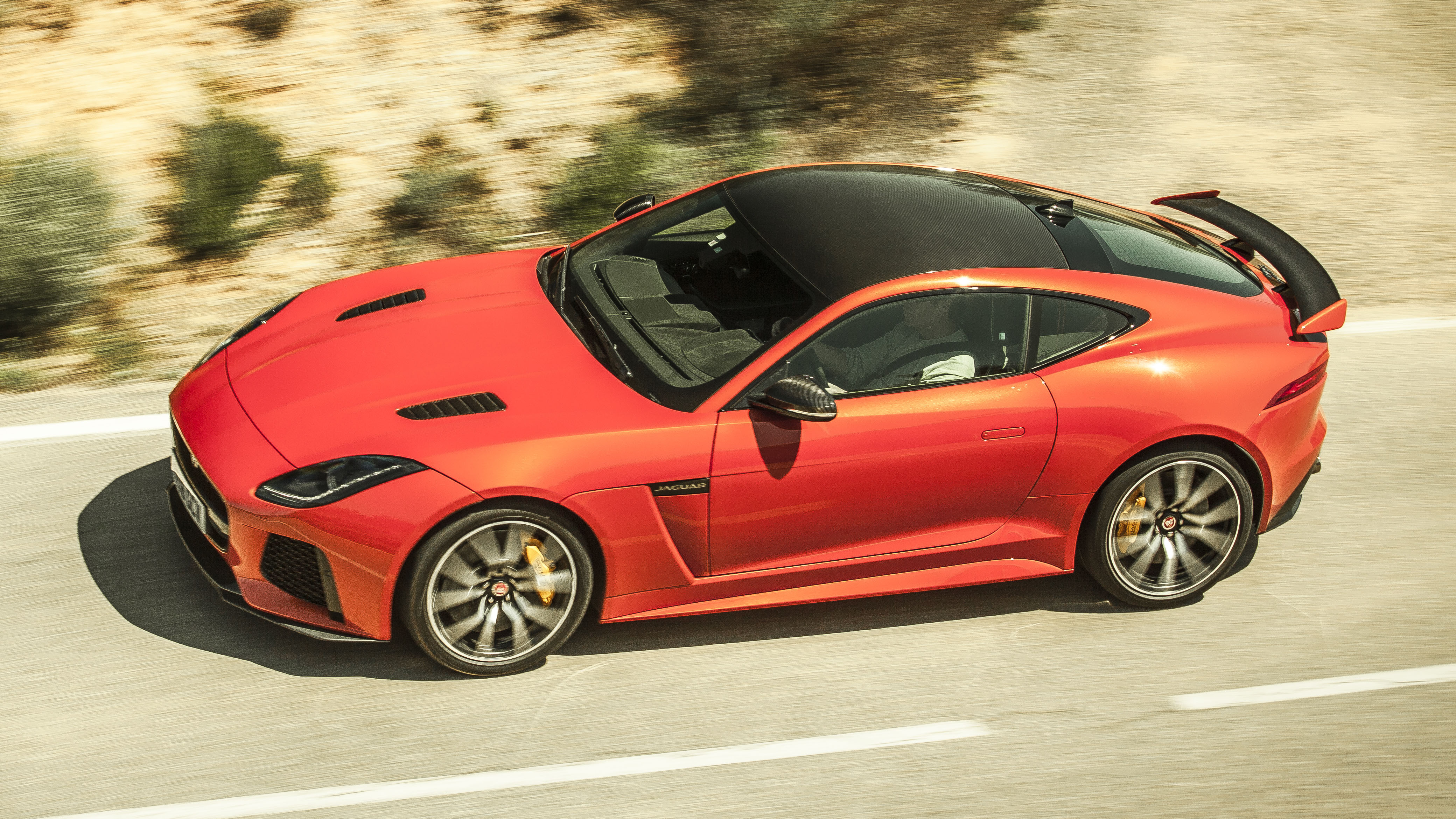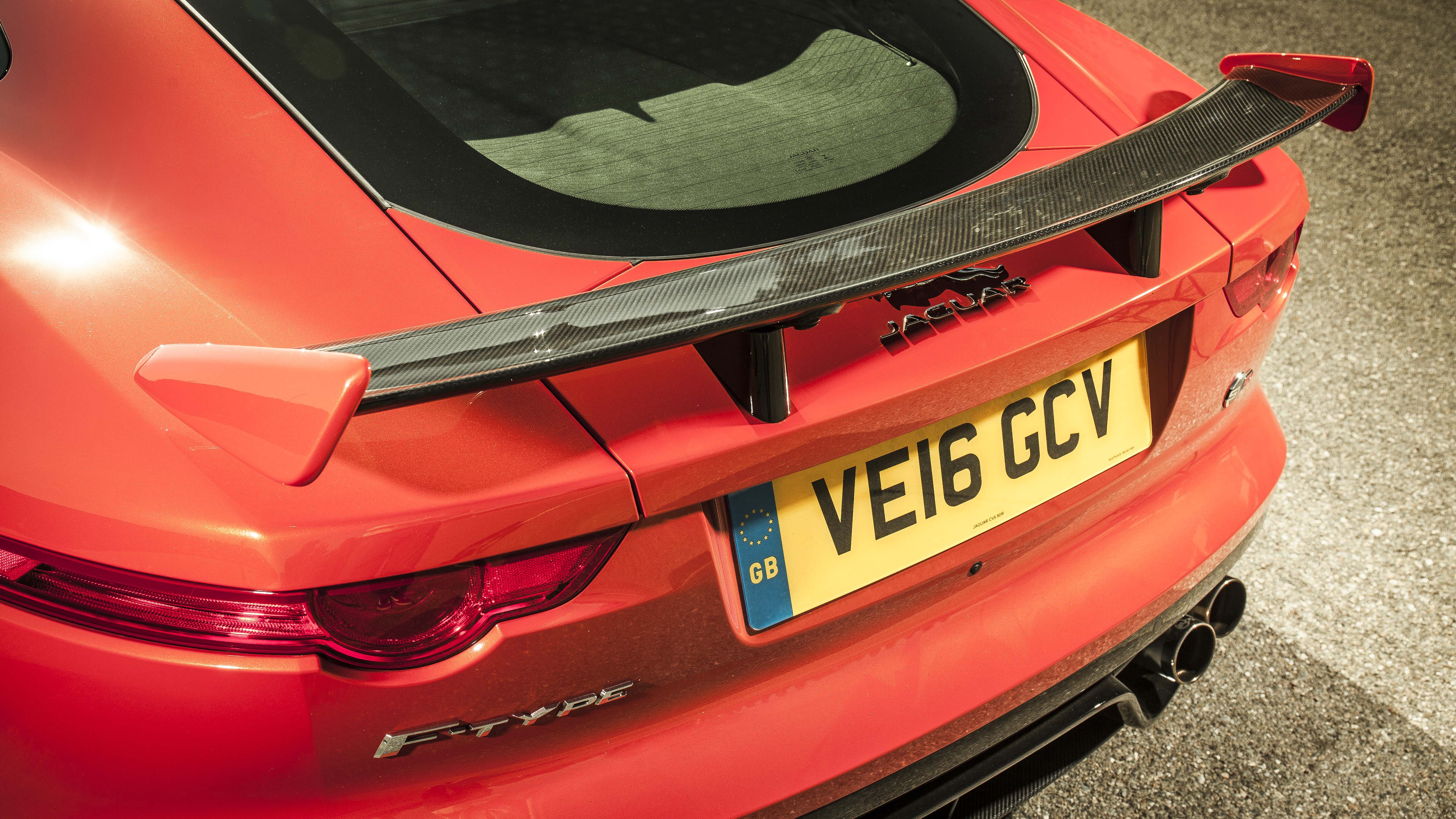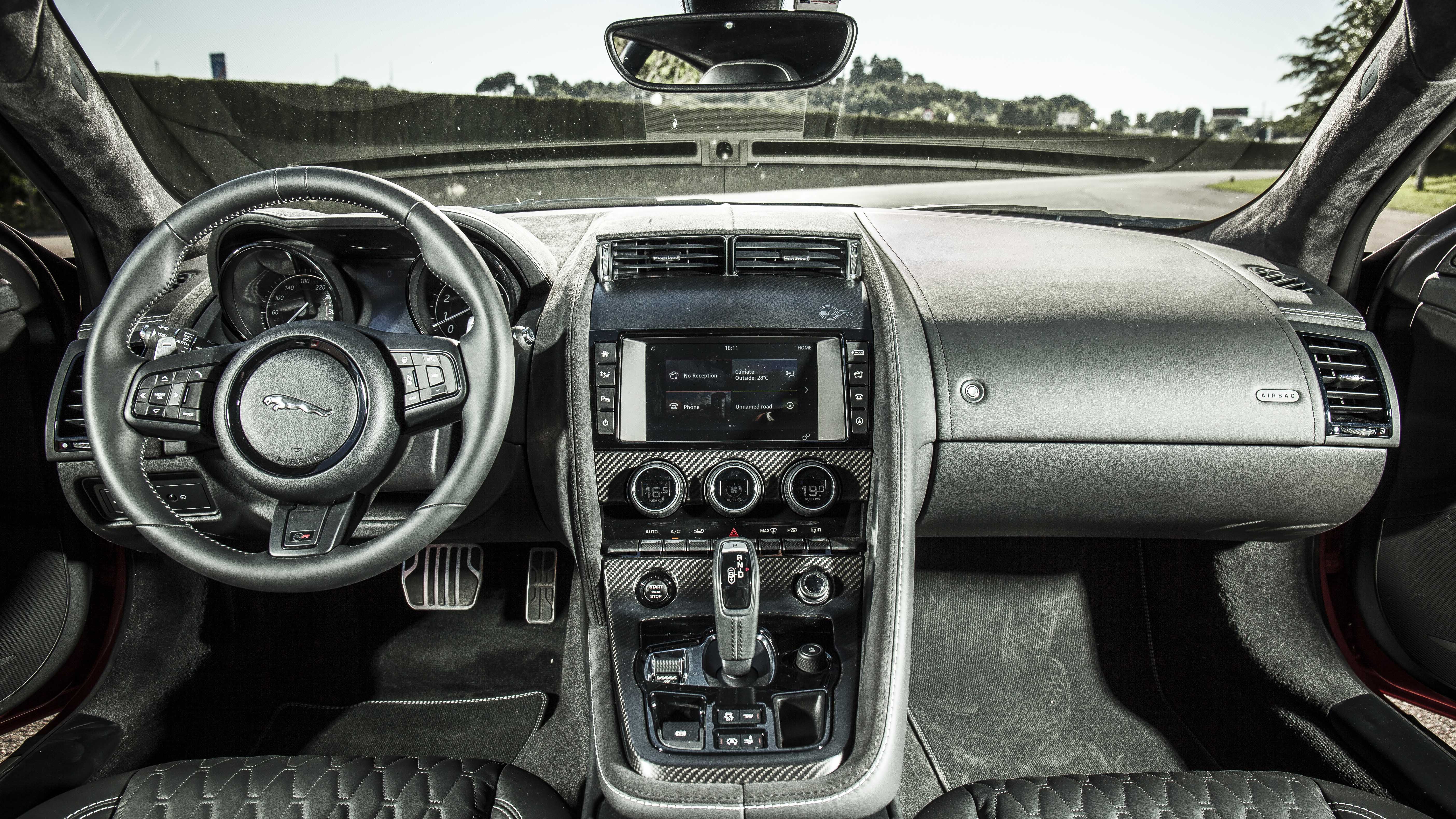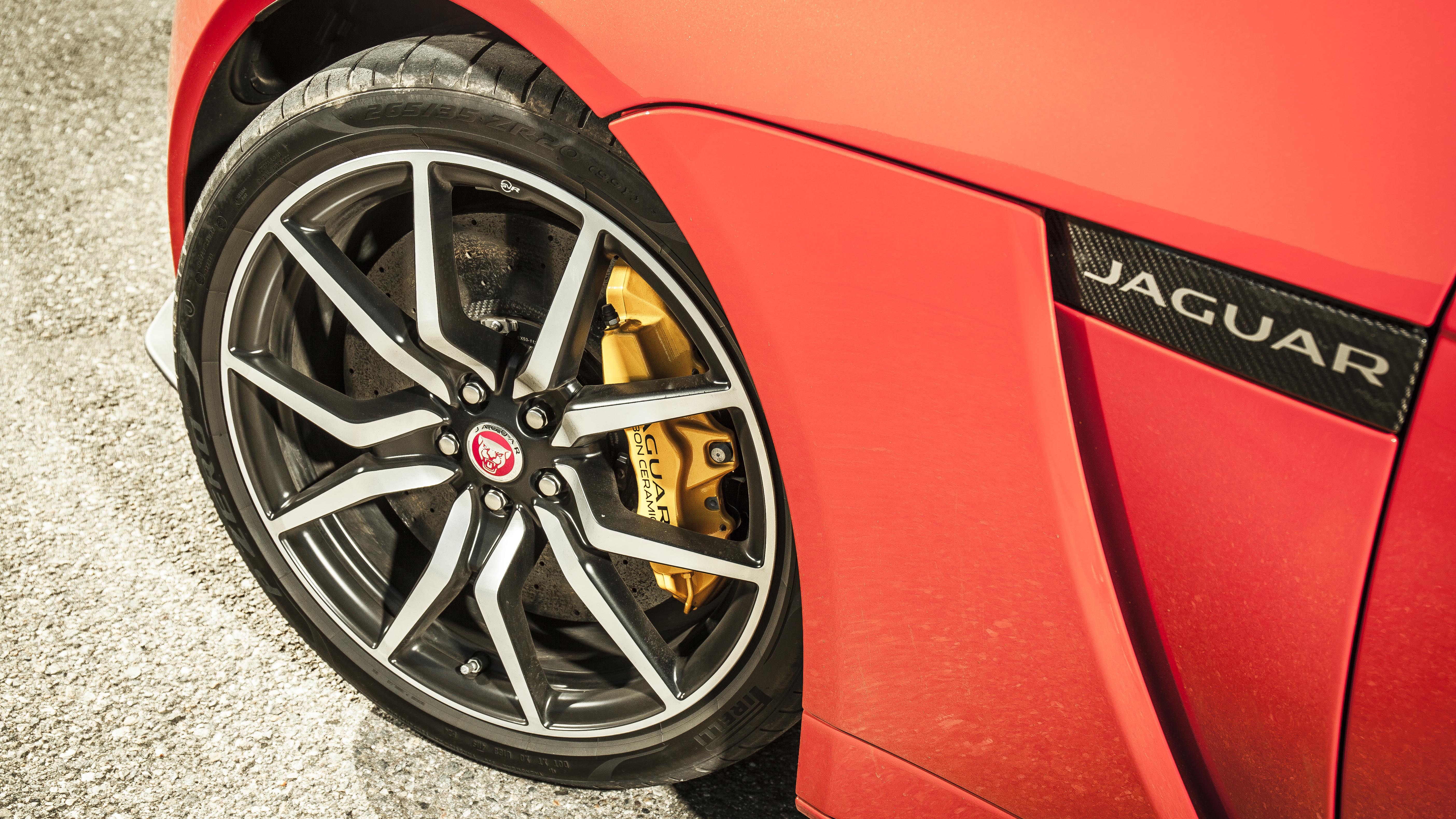
Jaguar F-Type SVR Coupe review: 200mph Jag driven
Isn’t this the fastest production Jaguar ever?
Yep, it’ll do 200mph. And that’s just the start of it – the Jaguar F-Type SVR Coupe is all about big numbers. It has a power output of 567bhp. It has the option of 398mm diameter carbon ceramic discs and a carbon fibre roof, which lops 50kg off its dry weight. There’s a new aero set-up at the front, a rear venturi configured to house a trick new exhaust, and a huge rear wing that reduces lift in specific conditions by 45 per cent. The SVR is louder, shoutier, and costlier (‘from’ £110,000 for the coupe).
Funny. The ‘regular’ Jaguar F-Type R is no-one’s idea of a shrinking violet. How many different fast F-Types do we need?
You’d be surprised. We were hugely impressed by the work JLR’s in-house, off-site performance specialists did on the Range Rover Sport, and they’ve performed similar feats of magic here, though perhaps not in the way you’d expect. This is actually a subtler sort of F-Type. OK, so that’s not the word that springs to mind when you fire it up – it’ll still rattle your windows and your dentistry, and make you very unpopular with the neighbours. And with all the carbon addenda it’s lairier to look at. But it’s a different beast to drive.
Go on…
The supercharged 5.0-litre V8 borrows its set-up from the limited-run Project 7 car, and benefits from a lightweight titanium and Inconel exhaust system, so it’s hardly backwards about coming forwards. Lay off the throttle for a bit, though, and it’s clear that the SVR is an unexpectedly nuanced car, more powerful than the existing top-flight F-Type R, but also way better at the detail stuff.
Will it work in the UK?
Oh yes. The regular F-Type has always been very amusing, if a bit unruly at times. So in order to extract more out of it, the SVO guys have had to rein in some of its excesses. Trimming some of the fat from the overly porky regular car helps (despite the aluminium-intensive chassis), as does the fitment of specially developed rubber: the SVR runs 65/35/ZR20 Pirellis upfront, whopping great 305/30/ZR20s at the rear. It has sharper turn-in now, and a front end you can lean on much more effectively. There’s a load more grip, and superior body control. It even fidgets less at low speed.
What else have the SVO guys done?
The changes to the car’s suspension are a major factor. The rear anti-roll bar is thicker. The valves inside the continuously variable dampers have been reworked. The software governing the SVR’s Adaptive Dynamics set-up has been recalibrated. The torque vectoring has been retuned, to minimise understeer yet further. The knuckle on the rear suspension is also new, and uses a lighter aluminium die casting to increase camber stiffness by 37 per cent and toe stiffness by 41 per cent. The F-Type’s electric power steering achieves a new level of feedback and linearity here, too.
Top Gear
Newsletter
Thank you for subscribing to our newsletter. Look out for your regular round-up of news, reviews and offers in your inbox.
Get all the latest news, reviews and exclusives, direct to your inbox.
So it’s basically a more rounded car to drive?
That’s one way of looking at it. Given the potential the SVR has to arrive at each corner that much faster than before, these changes are all most welcome. Driving this thing quickly is now much less of an adventure than the regular all-wheel drive car – especially through slower corners, and on high-speed sweepers, where the extra aero effort pays dividends. Even with the DSC switched off, its default setting – on a dry road, at least – is to grip, maintain an impressively neutral line through the apex, before sliding a little on the exit. No doubt on an empty racing circuit you could drift it all day long, but in the real world the SVR makeover gives the F-Type greater delicacy and precision, to go with the grand-standing performance. Fitted with the carbon ceramics, it also has the best brakes – and perhaps more importantly brake feel – of any road-going Jaguar we’ve ever driven. This is also a telling indicator of SVO’s prowess: Jaguar has long been better at going than stopping.
Problem areas?
The interior. Quite simply, it doesn’t feel like £110k’s worth. No issues with the driving position, or the car’s overall fitness for purpose. The SVR gains 14-way adjustable ‘Performance’ seats, and something called Lozenge Quilt on the doors. The steering wheel gets contrast stitching, the anodised paddle shifters are larger, and there’s the option of suede – our car had it, and it extends across the dash and centre console. JLR’s InControl Touch multi-media is pretty good if a little glitch-prone, and the 380W Meridian audio system is awesome. But Jaguar’s basic interior quality falls short of the best German efforts, and many of the pricey options on the SVR really should be standard for the money it costs.
But doesn’t Jaguar tout the F-Type SVR as a Porsche Turbo rival, a car that costs £17k more – £35k more if you peg the SVR to the similarly powerful Turbo S?
True. And there's a detail and engineering depth to the F-Type SVR that suggests that it genuinely can take the fight to the big guns. Porsche’s Turbo is certainly the most appropriate rival, even if we’d like to see a more athletic GT3 rival from Jaguar. As it stands, the F-Type is now as much a continent-swallowing Gran Turismo as it is scalpel-sharp supercar. No mean feat, getting those two attributes to co-exist so successfully.
Photography: Simon Thompson
Featured

Trending this week
- Car Review
BMW 1 Series




